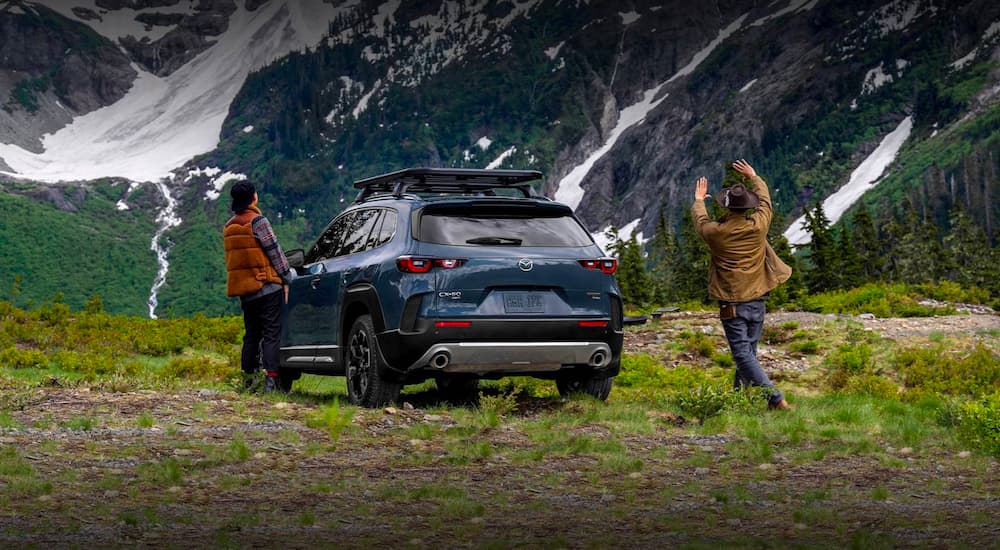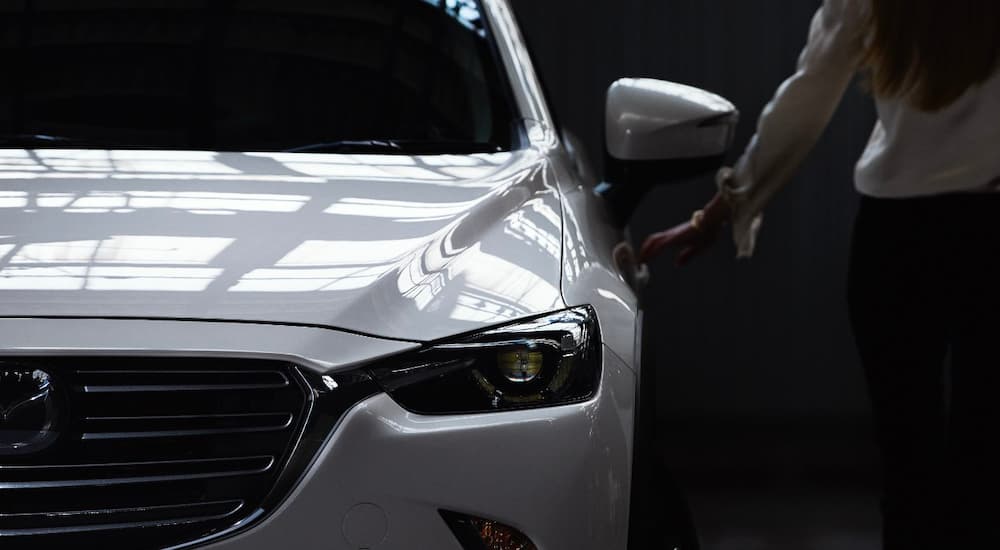The CX-5 is Mazda’s most popular and best-selling model, yet its future is a bit uncertain and could be on its way out. This is because Mazda is introducing an all-new model for the 2023 model year: the CX-50, which is built on the same platform as the smaller CX-30 but with a number of impressive features inside and out. While there’s absolutely nothing wrong with the CX-5, the reality is that it’s so similar to the new CX-50 that it might not make sense for both of them to exist together in Mazda’s lineup.
Whether you’re looking for online Mazda CX-5 sales, planning for the next time you go shopping for a small crossover SUV, or simply interested in staying on top of what’s happening in the auto industry, it’s worth knowing what’s going on at Mazda right now. What does the future look like for the CX-5, and how long will it continue to be the foundation of Mazda’s crossover lineup? Let’s take a look at this model compared to the brand-new CX-50, as well as some other key factors in what’s happened with Mazda’s lineup, and we’ll get a pretty good sense of what to expect in the years ahead.
The Engines: The CX-5 vs. The CX-50
One of the most compelling pieces of information when looking at the Mazda CX-5 and the all-new CX-50 is their engine options. Every CX-5 model comes with a 2.5L SKYACTIV-G 4-cylinder engine; most trims feature a standard version that provides 187 hp and 186 lb-ft of torque. The Turbo trims for the CX-5 come with a turbocharged version of this engine that boosts performance up to 256 hp and 320 lb-ft of torque. That’s a significant difference, and while the standard version of the engine is already a lot of fun to drive, there’s no denying that the Turbo models provide much beefier acceleration and top-end performance.
By comparison, every CX-50 model comes with a 2.5L SKYACTIV-G 4-cylinder engine; most trims feature a standard version that provides 187 hp and 186 lb-ft of torque. The Turbo trims for the CX-50 come with a turbocharged version of this engine that boosts performance up to 256 hp and 320 lb-ft of torque. That’s a significant difference, and while the standard… see what I did there? Yeah, they’re the exact same engine between these two models, even down to the Turbo trims with improved performance.
On top of having the same engine and options for it, both the Mazda CX-5 and the CX-50 come with i-ACTIV all-wheel drive (AWD) standard on every model, plus they both feature a six-speed automatic transmission with a manual shift mode. Essentially, both models’ performance and overall driving experience are incredibly similar, so you’re not going to have a bad time behind either of them. This would probably make one ask, “Then why have both?” and that’s exactly my point. It’s not unheard of to have two models with the same engine in a company’s lineup, but some other distinctions usually set them apart in key ways so that having both options makes sense.
A Massive Number of Similarities
With the CX-5 and the CX-50, we’re looking at many similarities beyond both of them, featuring the same powertrain and options. For starters, let’s look at the size of these two vehicles. The CX-5 measures 180.1 inches in length with a 106.2-inch wheelbase, plus it measures 72.6 inches in width and stands 65.6 inches tall. By comparison, the CX-50 is 185.8 inches in length with a 110.8-inch wheelbase; it measures 72.9 inches in width and stands 63.9 inches in height. You can see that while the CX-50 is technically larger, the difference comes down to just over five inches in length.
Similarly, both of these models have two rows of seats for up to five passengers and very similar interior dimensions. The CX-5 has about 39 inches of headroom, 41 inches of front legroom, and 39.6 inches of legroom for rear passengers, with 104 cu.ft. of total passenger volume inside. Looking at the CX-50, it has about 38 inches of headroom, more than 41 inches of front legroom, and 39.8 inches of rear legroom, plus just over 98 cu.ft. of total passenger volume. Due to the slightly lower height, there’s a bit less headroom inside the CX-50 than the CX-5, and it has less overall passenger space, but not by a huge amount. On the other hand, the CX-5 has about 30 cu.ft. of rear cargo volume and about 59 cu.ft. of total cargo space, while the CX-50 has more than 31 cu.ft. of rear cargo space and just over 56 cu.ft. of total volume.
In addition to these significant similarities in terms of space inside, you’ll also find a lot in common when it comes to how the interiors of these two models are designed. The Mazda CX-5 has an available 7-inch LCD screen for the driver instrumentation, a standard 10.25-inch full-color infotainment display, a Bose 10-speaker sound system, and available leather seating. Inside the CX-50, you’ll find the 7-inch driver display standard on all models, with the 10.25-inch Infotainment display in every trim but the starting one, plus an available Bose 12-speaker sound system and gorgeous leather interior.
Across the board, you’ll find these kinds of similarities inside and out between these two vehicles. Sure, there are minute differences, but they’re so few and far between that, in general, they’re more alike than they are different. It all comes together to reinforce this initial question of whether there’s a reason for both to exist in Mazda’s lineup.
The Fate of the CX-3 and Future of the CX-5
For me, one of the most important things to consider when looking ahead is what happened with the CX-3, a subcompact crossover that Mazda used to offer. In 2020, Mazda introduced the CX-30 based on the same platform as the CX-3 and with many similar features but plenty of improvements. This was quickly followed by the 2021 model year being the last for the CX-3 as it was discontinued to eliminate competition within their lineup. To be fair, in North America, Mazda sold just over 8,500 CX-3 models in 2020 compared to more than 38,000 CX-30s, so this certainly made sense.
But, by comparison, in 2020, Mazda sold more than 146,000 CX-5 models – they beat this last year with more than 168,000 CX-5 models sold in 2021. That’s why I started this off by saying that the CX-5 is their most popular option – it outsells all of their other crossover and SUV models combined (in 2021, the CX-5 accounted for more than 62% of all Mazda SUV sales here in North America). Looking at these numbers, it could certainly make sense for Mazda to keep selling the CX-5 if it can maintain such popularity. But will it?
Ultimately, the future of the CX-5 will depend on the reaction to the introduction of the CX-50 and whether people will go for it over the CX-5. As we saw with the sales figures for 2020, the CX-30 immediately became more popular in its introductory year than the similar CX-3, so discontinuing that model made perfect sense. If we see something similar happen with the CX-50 and it comes out the gate at full speed, outselling the CX-5, then we could see 2024 be the final year for what is currently their most-popular model by a huge margin. We probably won’t know the fate of the CX-5 for another year, but sales figures for the end of 2023 will likely indicate whether it lives or dies.






